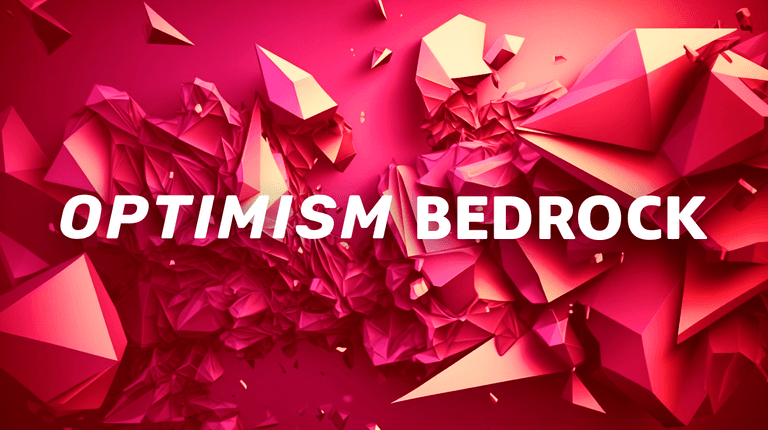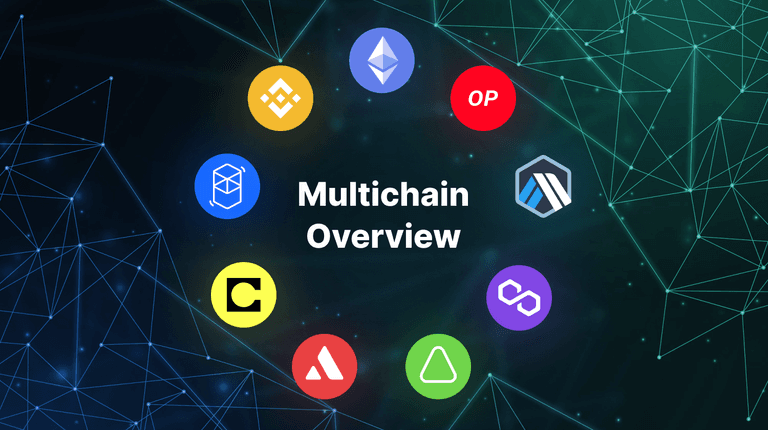Optimism
Browse the tokens of Optimism – a layer-2 scaling solution with fast, cheap transactions, EVM compatibility, and a trustless Ethereum bridge.
All You Need to Know About Optimism
Optimism is a Layer 2 scaling solution for the Ethereum network that aims to improve transaction speeds and reduce gas fees. With the rise of decentralized applications (dApps) and DeFi protocols, the Ethereum network has faced significant congestion and scalability issues, resulting in slow transaction processing times and high fees. Optimism seeks to address these challenges by using a technology known as Optimistic Rollups, which allows for off-chain processing of transactions while still maintaining the security and trustlessness of the Ethereum network.
Brief History of Optimism
The Optimism project was founded in 2019 by developers Ben Jones and Jinglan Wang. In March 2020, Optimism received a $3.5 million seed round investment from investors including Paradigm, IDEO CoLab, and Dragonfly Capital Partners. The team launched the Optimistic Virtual Machine (OVM) in July 2020, which serves as a high-performance EVM-compatible execution environment for smart contracts.
The Optimism team later developed Optimistic Rollups, which launched in January 2021 on the Ethereum mainnet as a layer-2 scaling solution. In July 2021, Optimism raised $25 million in a funding round led by a16z and Paradigm. In 2022 Optimism issued and airdropped its own OP token. The launch was followed by a technical mistake, which caused some users to have a claim even before the official event started. However this volatility stabilized after a while and the OP token, as well as Optimism, continues to be developed to this day.
Why do We need Scaling Solutions?
Ethereum's popularity has grown rapidly over the years, and so has its network usage. However, with the increasing number of users and transactions, the network has become congested, leading to slower transaction speeds and higher fees. These issues have become more pressing as Ethereum's adoption continues to grow.
To address these problems, Ethereum needs a scaling solution that can increase its transaction throughput and lower fees. The need for scaling is driven by several factors:
- Decentralization - Ethereum's vision of a decentralized world computer requires a network that can support many nodes and users without compromising security or performance. To achieve this, the network needs to scale in a way that ensures decentralization is not compromised.
- Adoption - As the demand for Ethereum increases, it is very clear that the current optimization will not be sufficient in the future.
- Competition - Many new and experimental projects offer faster transaction times, cheaper gas fees, and more secure consensus. If Ethereum needs to scale in order to keep up with the competition.
How does Optimism work?
Optimism is a Layer 2 optimistic rollup. Optimistic rollups aim to increase the network's transaction throughput while maintaining its security and decentralization. This is achieved by aggregating multiple transactions into a single batch, which is then validated by a smart contract on the Ethereum mainnet. Unlike other scaling solutions that require a trade-off between security and scalability, optimistic rollups allow for fast and cheap transactions without compromising on the security of the underlying blockchain.
Generating Blocks
Users conduct transactions on the Optimism L2 in the same way as they would on the Ethereum mainnet. These transactions are then bundled up and deposited into blocks. The only entity at this time, which is capable of creating L2 blocks is a special kind of validator called the Sequencer. The role of the Sequencer is to ensure that all the transactions are valid, resolve potential disputes and later deposit the blocks to the Ethereum mainnet.
There is only one sequencer on the Optimism L2, operated by the Optimism Foundation, which poses a centralization risk. However, the Optimism Foundation says that they plan on decentralizing the sequencer in the near future.
Frauds and Malicious actors
Transactions from the Optimism L2 are deposited on the Ethereum mainnet without any direct validity proof. Instead, before every deposit, there is a time window of 7 days called the challenge window. During this time period, users can accuse transactions of being invalid or fraudulent through the so-called fault-proof process. If the transaction is confirmed as invalid, it is removed from the batch and replaced by another.
Ethereum Bridge
The bridge is essentially a two-way peg that allows for the transfer of tokens and other assets between the two networks. When a user wants to move assets from Ethereum to Optimism, they first send their assets to a smart contract on Ethereum, which locks the assets and mints a corresponding amount of wrapped assets on the Optimism network.
- Facilitates the connection between Optimism L2 and Ethereum L1
- Assets are locked in a smart contract on one side and the corresponding amount is minted on the other
This wrapped asset is a representation of the original asset and can be used within the Optimism ecosystem. When the user wants to move their assets back to Ethereum, they simply burn the wrapped assets on the Optimism network and receive the original asset on the Ethereum mainnet.
The Optimism Token (OP)
OP is the governance and potential utility token of the Optimism network. It was launched in May 2022 and distributed through an Airdrop system. The OP token grants holders participation rights in The Optimism Collective, a two-tier governance system consisting of Token House and Citizens’ House. Token House governs technical decisions, while the Citizens’ House manages public-goods funding decisions.
Use cases and applications
Optimism has a very similar environment to that of Ethereum. Same wallet apps, such as Metamask may be used and even the wallet address stays the same as on the Ethereum mainnet. Transactions are cheaper and faster on Optimism, however, ETH is still used to pay for gas fees, so the Optimism account has to be funded with ETH beforehand.
In terms of ecosystem, Optimism is built to be compatible with Ethereum, so most Ethereum-based dApps can easily be ported over to Optimism. This means that users can expect to see many of the same dApps and services available on Optimism as they would on Ethereum.
The well-established dApps you can find on Optimism include AAVE, Curve, or Uniswap. However among the most popular ones are Optimism native dApps, like the Velodrome DEX, or Sonne Finance lending platform.
FAQs
Is Optimism a part of Ethereum?
In a way, you could say that Optimism is a part of Ethereum. More specifically Optimism is built on top of Ethereum. The two networks are connected via a two-way peg bridge, which serves as a main transfer channel between the L1 (Ethereum) and L2 (Optimism).
Does Optimism crypto have a token?
Yes, Optimism has its own native token with the symbol OP. It is used mainly for governance in the Optimism network. The token was distributed through a series of airdrops beginning in 2022. To this day the full token supply has not been claimed.
How to send from L2 to L1?
The safest and most straightforward way is to use the official Optimism bridge. The bridge allows users to transfer any token between L1 and L2 in any direction. Transferring transactions usually take a while and require a fair amount of gas (paid in ETH).
How to add Optimism in Metamask?
To add the Optimism network manually, open your Metamask wallet and expand the network button in the top right corner. From there, you should see a button saying "Add Network". When you click on that button, Metamask will show you some popular networks to add, including the Optimism network. Simply select the plus button next to the network you wish to add.
What token does Optimism use for gas?
As Optimism functions on top of Ethereum, its native token is ETH. Make sure your Optimism account is funded with ETH before transferring any other assets. Transaction fees on Optimism will be much lower compared to Ethereum L1.



